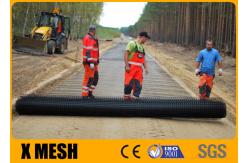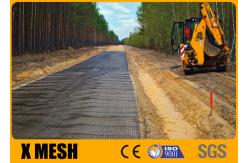4x10m Black Plastic Mesh Netting Roll ASTM D7737 For Municipal Project
|
Detailed Product Description
ASTM D7737 Standard 100 years Life Time municipal project Plastic Mesh NettingPlastic Mesh Netting Introduction:
What is a geogrid?A geogrid is defined as a geosynthetic material consisting of connected parallel sets of tensile ribs with apertures of sufficient size to allow strike-through of the surrounding soil, stone, or other geotechnical material (Qijie Company). Geogrids provide reinforcement, stabilization, and even filtration when used with properly sized aggregate fills. Made from polymers such as polypropylene, polyethylene, or polyester, they are used widely in civil engineering applications.Geogrids are deployed for three primary applications:1. Building firm working surfaces over soft ground conditions2. Enhance a pavement's service life3. Reduce the structural cross-section of both paved and unpaved roadways for given service life.Geogrids have also been proven to significantly improve a pavement's susceptibility to environmental cracking common when building over highly expansive subgrade soils. Geogrids work by interlocking with the granular or soil material placed over them. The open apertures of the geogrid allow for the confinement of material within, increasing the shear strength of overlying granular fill.The different types of geogrids?There are four types of geogrids Uniaxial, Biaxial, Triaxial (Triax®) and Geogrid-Geotextile Composites. Each designed and manufactured for specific construction applications with various geometric and structural index properties.Uniaxial GeogridCertain Uniaxial (UX) geogrids are oriented along the longitudinal, "machine direction" of an extruded sheet of polymer, thus yielding a grid structure consisting of long narrow ribs. Other products utilize polyester yarns to render extremely high allowable strengths at deficient strains. Given their unique properties, Uniaxial geogrids are ideal for both wall and slope applications such as retaining walls, landfill liner systems, embankments over soft soils, and very steep earthen slopes.Biaxial GeogridBiaxial (BX) geogrids are stretched in two directions, the longitudinal and transverse, equally distributing stress along both directions. While woven geogrids are still commercially available, extruded punched-and-drawn geogrids made of polypropylene are the most deployed among biaxial geogrids. Providing the geogrid with the ability to distribute loads over a wider area than usual while increasing its capacity in base stabilization applications. Biaxial geogrids are best for applications such as foundations for roadbeds, railroad truck beds, permanent unpaved roads, airport runways, construction haul roads, working platforms on weak subgrades, and parking lots.Triaxial GeogridTriAx® (TX) geogrids, a next-generation enhancement to biaxial geogrids, have additional diagonal ribs that increase the product's in-plane stiffness. The triangular pattern is formed into a hexagon to improve how the product absorbs traffic loading forces. TriAx® creates a more efficient effect that delivers optimal in-service stress transfer from the aggregate to the geogrid. Triaxial geogrids have undergone extensive full-scale and field testing and have been calibrated within the more common pavement design methodologies, both for paved and unpaved roads.Geogrid-Geotextile CompositesGeogrid-Geotextile Composites are comprised of both material types that are heat or sonically welded together to yield an effective reinforcement and separation element for very challenging subgrade soil conditions. When subgrade filtration-separation criteria cannot be met with adequately graded fill materials, Geogrid-Geotextile Composites are ideal for deploying. Such that underlying subgrade soils may be appropriately filtered, thus preventing contamination of the overlying granular fill.Plastic Mesh Netting Specifications:
|
|||||||||||||||||||||||||||||||||||||||||||||||||||||||||||||||||||||||||||||||||||||||||||||||||||||||||||||||||||||||||||||||||||||||||||||||||||||||||||||||||||||||||||||||||||||||||||||||||||||||||||||||||||||||||||||||||||||||||||||||||||||||||||
Item | Roll Size | Load quantity of 1 X 40' hq container |
20 Kn X 20 Kn | width 3.95 m * length 50 m | 220 rolls, 43450 Sq. m |
30 Kn X 30 Kn | width 3.95 m * length 50 m | 144 rolls, 28440 Sq. m |
40 Kn X 40 Kn | width 3.95 m * length 50 m | 90 rolls, 17775 Sq. m |
50 Kn X 50 Kn | width 3.95 m * length 50 m | 60 rolls, 11850 Sq. m |
Delivery Time: 3-15 days
Sample Time: 1-3 days
Payment Methord: T/T, L/C, Western Union or as per negotiate



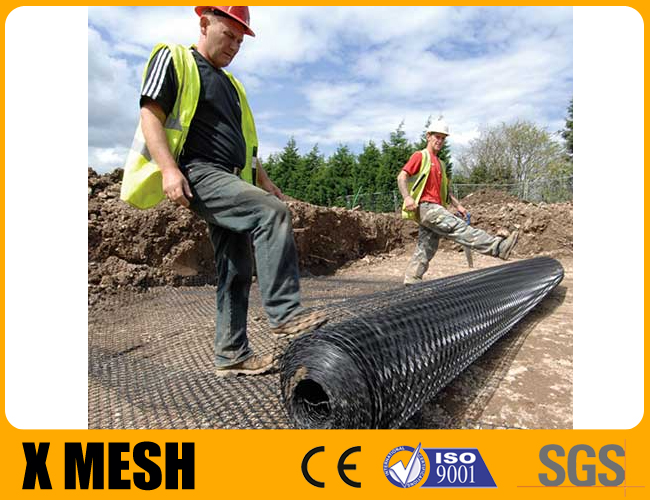

Related Products
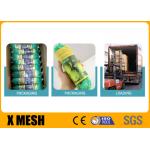
|
17 Inch Width Plastic Mesh Netting 500 Ft Length Green Color Uv Resistance Anti Bird |
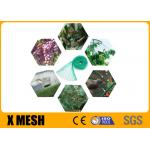
|
Green Color Garden Mesh Netting Heavy Duty Type 14 Inch Width 100 Ft Length |
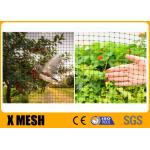
|
Uv Resistance Plastic Mesh Netting 4m Width By 12m Length 5 Years Using Life |
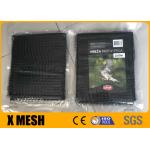
|
20mm Hole Size Plastic Netting Fence 7g Per Square Meter Green Color For Bird Proof |
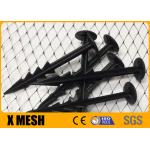
|
Diamond Type Plastic Mesh Netting With Uv Resistance Black Color For Bird Control |
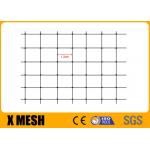
|
0.63 Inch By 0.75 Inch Hole Size Plastic Poultry Netting Bird 17 Inch Height By 5000 Ft Length |
Email to this supplier

